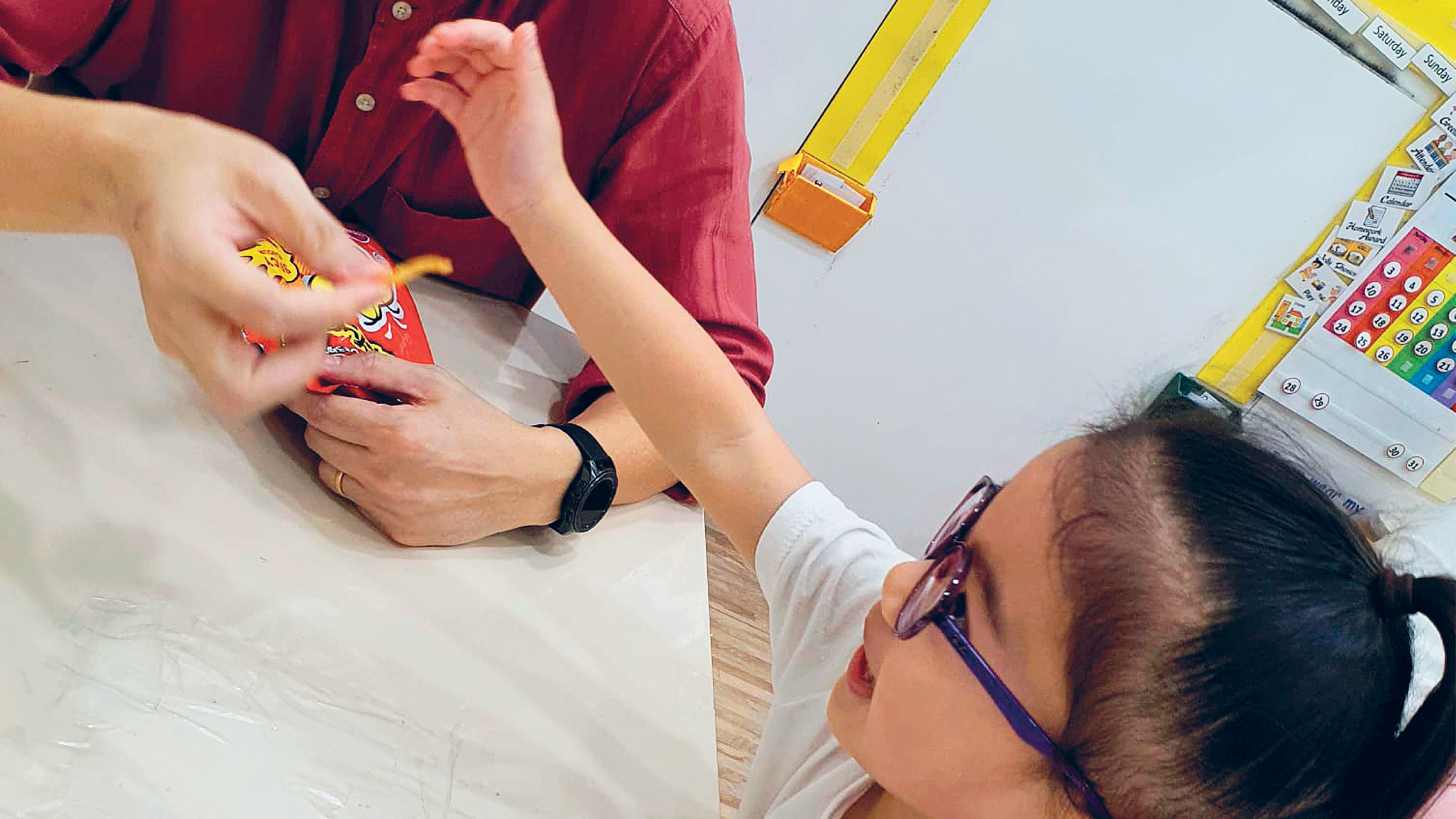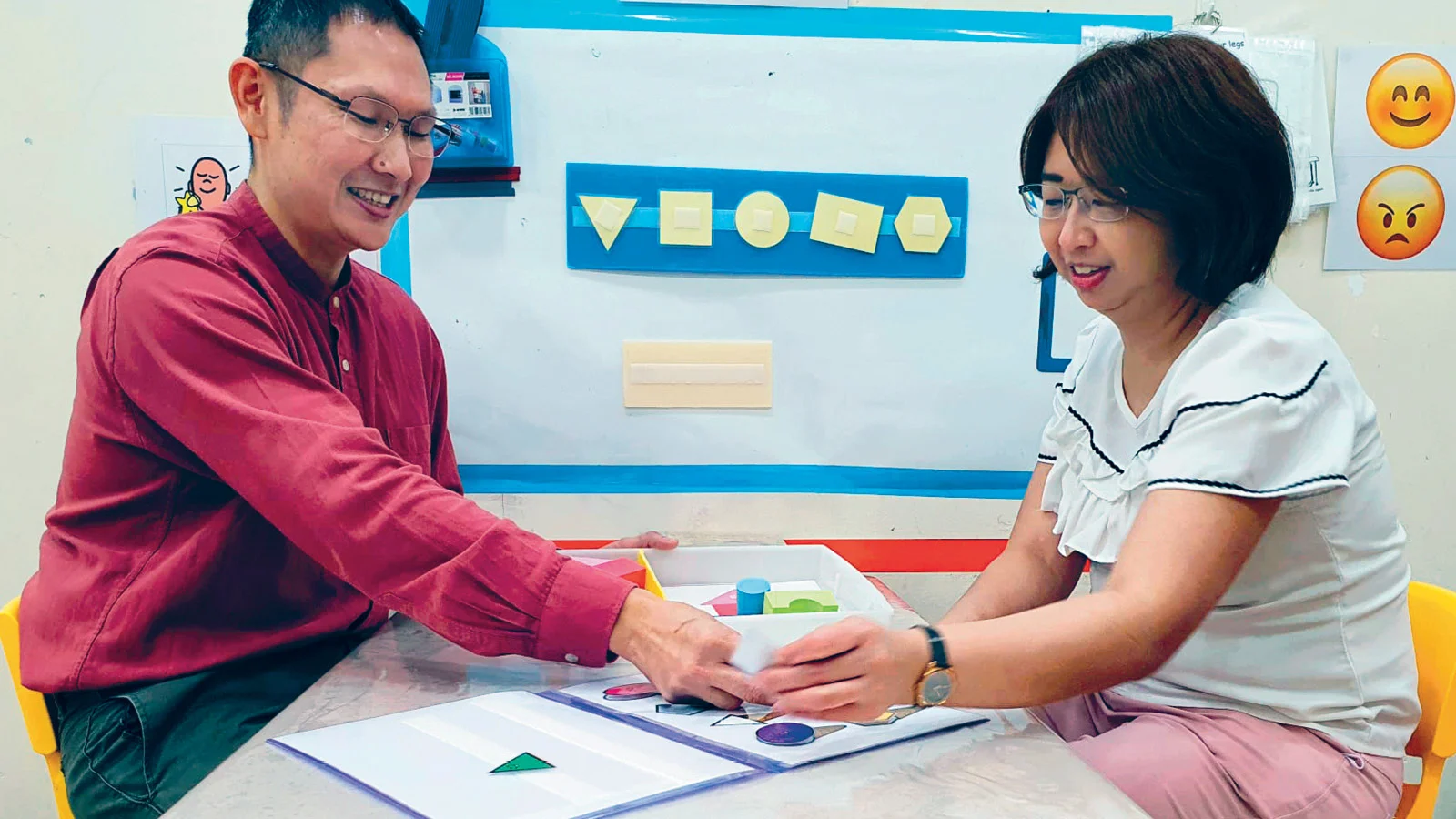Establishing a secure relationship with children is one of the first things Mr Reuben Cheng does as an early intervention (EI) teacher.
“I seek to build strong rapport and trust with children by engaging in their play and activities to help them feel comfortable around me,” says Mr Cheng. He works at Fei Yue Community Services’ Early Intervention Programme for Infants and Children (EIPIC), which delivers specialised care to children who require medium to high levels of EI support.
“I also use praise to reinforce positive behaviours to motivate them to repeat those actions,” adds Mr Cheng, who is based at Fei Yue EIPIC Centre (Wellington Circle). His dedication was recognised in 2022 when he received the ECDA Outstanding Early Intervention Professional Award.
 Mr Reuben Cheng uses opportunities such as snack time to build rapport and practise communication skills with children.
Mr Reuben Cheng uses opportunities such as snack time to build rapport and practise communication skills with children.
UNDERSTANDING EACH CHILD’S UNIQUE NEEDS
The EIPIC programme ensures each child has an Individualised Education Plan (IEP) tailored to their personality, preferences, routines and learning style. The IEP also considers the child’s current abilities, needs and challenges, as well as the functional skills they need to acquire.
Mr Cheng and his team of allied health professionals — comprising an occupational therapist, a speech therapist, a psychologist and a social worker — work with parents to develop an IEP plan, tailoring the learning and developmental goals for the child. Throughout the intervention sessions, he monitors the child’s progress, adjusts the activities accordingly, and regularly updates parents.
When families face challenges bringing their child to the EIPIC centre, Mr Cheng and his team will conduct home visits. They assess the environment and help parents and caregivers apply learning strategies using household items.
 IEP discussions with a co-EIPIC teacher help Mr Cheng refine and adjust his lesson plans.
IEP discussions with a co-EIPIC teacher help Mr Cheng refine and adjust his lesson plans.
PARTNERING PARENTS
Mdm Liew Kok Ing, a parent, recalls how Mr Cheng spent months patiently building a relationship with her daughter Eva, then aged 5. “For the first four months, Eva refused to speak and mostly gestured for her needs,” she says. “Teacher Reuben didn’t rush her. Gradually, she began to prefer doing activities together with him and even started verbalising more.”
He also shared videos of Eva’s classroom activities. “Teacher Reuben took videos demonstrating how he used Play-Doh to strengthen Eva’s fine motor skills and encouraged me to do likewise at home,” notes Mdm Liew. “As a result, her pencil grasp improved, and she could learn to write the letters of the alphabet with assistance.”
“Witnessing children’s progress and seeing them advance to the next level, along with the joy on their parents’ faces, is heartwarming,” says Mr Cheng. “It makes me cherish the work I do.”







